In recent years, container gardening has grown in popularity, and for good reason. Whether you have limited space, want to add foliage to your balcony, or appreciate the convenience of having fresh produce close at hand, fast growing vegetables in pots are an excellent option.
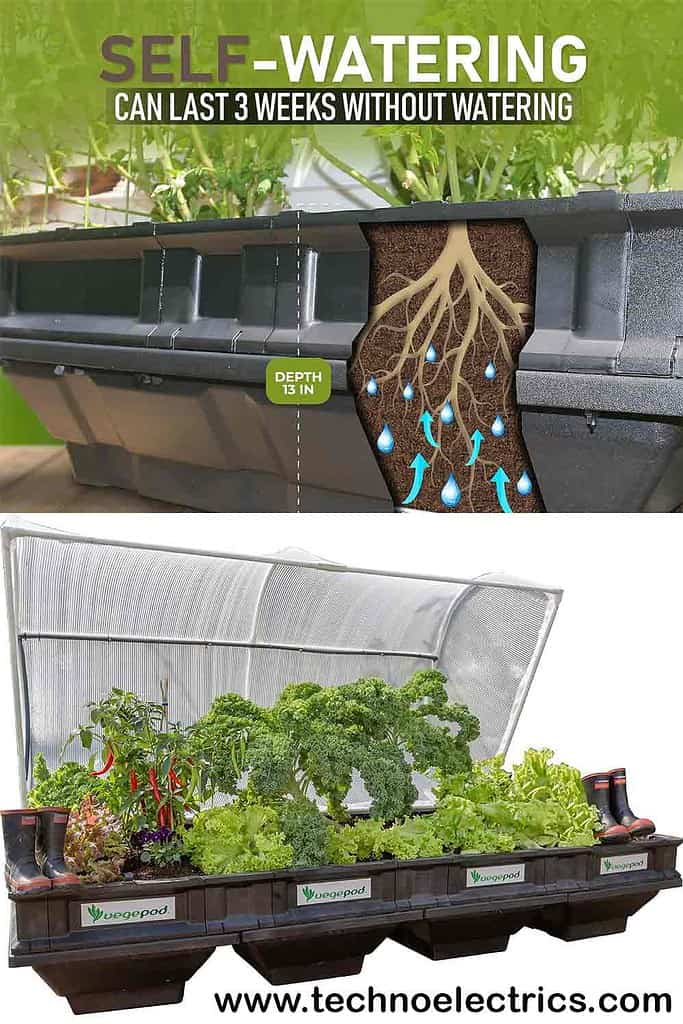
Click the image to buy on Amazon.
Growing Vegetables in Pots
In this article, we will talk about the benefits of container gardening, the types of veggies that do the best when grown in planters, some general care advice for plants, and some creative ideas for making a genuinely magnificent container garden.
Also Read: How to Make Money with Gardening
Benefits of Growing Vegetables in Pots
There are numerous benefits to producing vegetables in containers. Primarily, it enables you to have a garden regardless of how little space you have. You can still experience the satisfaction of growing your vegetables even if you live in an apartment, have a small backyard, or have a minuscule balcony.
Here are some of the most common:
- Convenience: Container gardening is an excellent option for people with limited space, such as those living in apartments or with small yards. Depending on the weather or preference, you can also move your pots around to different locations.
- Control: When you grow vegetables in pots, you have more control over the soil, water, and nutrients they receive. This may result in plants that are in better health and produce more fruit or vegetables.
- Efficiency: Container gardening can be a more efficient way to grow vegetables than traditional gardening methods. This is because you can use smaller pots and space them closer together, which saves space.
- Less pests and diseases: Compared to vegetables grown in the ground, those grown in containers are less likely to be affected by problems and illnesses. This is because the roots of container-grown plants are less likely to come into contact with soil-borne pathogens.
- Better drainage: Pots with drainage holes allow excess water to escape, which helps to prevent root rot and other problems.
- Early harvest: Container-grown vegetables can often be harvested earlier than those grown in the ground. This is because the pots warm up more quickly in the spring, and the plants are less likely to be damaged by frost.
- Aesthetics: Container gardens can add beauty and interest to any outdoor space. You can choose pots that match your décor and plant various vegetables to create a colorful and attractive display.
Some of the vegetables that are best to grow in pots include:
- Tomatoes
- Peppers
- Potatoes
- Lettuce
- Carrots
- Peas
- Herbs
- Strawberries
- Radishes
- Spinach
- Beans
When choosing vegetables to grow in pots, it is essential to consider the size of the pot, the amount of sunlight the plants need, and the climate in your area. You can also find a variety of pre-made vegetable mixes at garden centers designed for container gardening.
Your container garden can provide you with delicious, home-grown veggies if you take the time to design and care for them properly.
Also Read: Unearthing Expert Tips to Start a Garden From Scratch
Best Vegetables to Grow in Containers
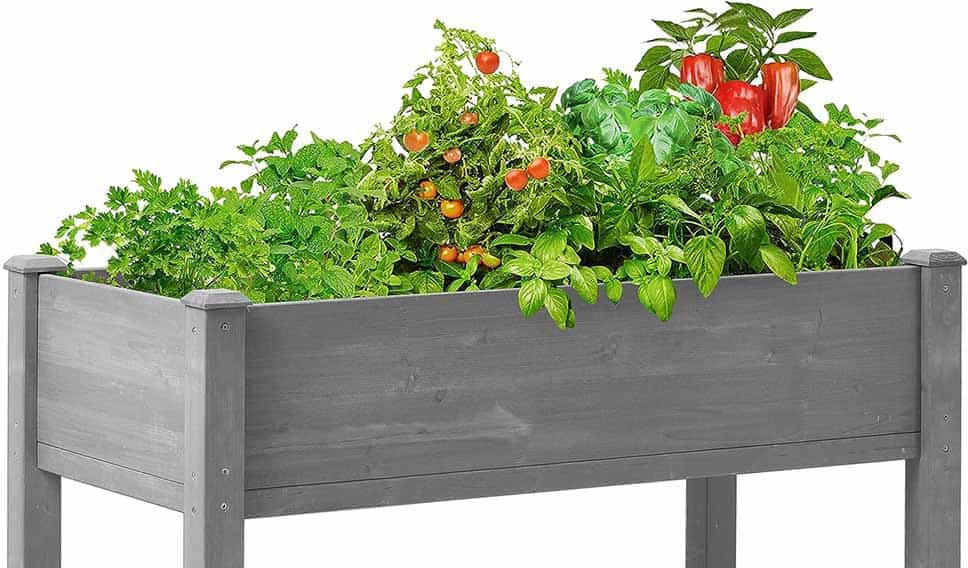
Click the image to buy on Amazon.
When selecting vegetable varieties for container gardening, choosing varieties that thrive in containers is essential. Tomatoes, peppers, lettuce, spinach, radishes, and herbs such as basil and parsley are vegetables that do well in containers. These vegetables have compact root systems and require little growing space.
Tomatoes, for instance, can be readily cultivated in containers and yield a bountiful harvest. Consider using determinate varieties, which are more compact and suitable for growing in containers. On the other hand, peppers are excellent for lending color to a container garden.
Choose compact varieties such as ‘Cayenne’ and ‘Jalapeno’ for optimal results. Also ideal for containers are lettuce, spinach, and other leafy leaves. Choose plants with loose leaves that develop quickly and may be picked more than once.
Radishes are another excellent choice for container gardening, as they increase and don’t require much space. Consider planting basil, parsley, or even mint in containers as herbs. Not only do they contribute flavor to your meals, but they also impart a beautiful aroma to your garden.
Also Read: Best 9 Self-Watering Tomato Planters
Choosing the Right Containers for Your Vegetables
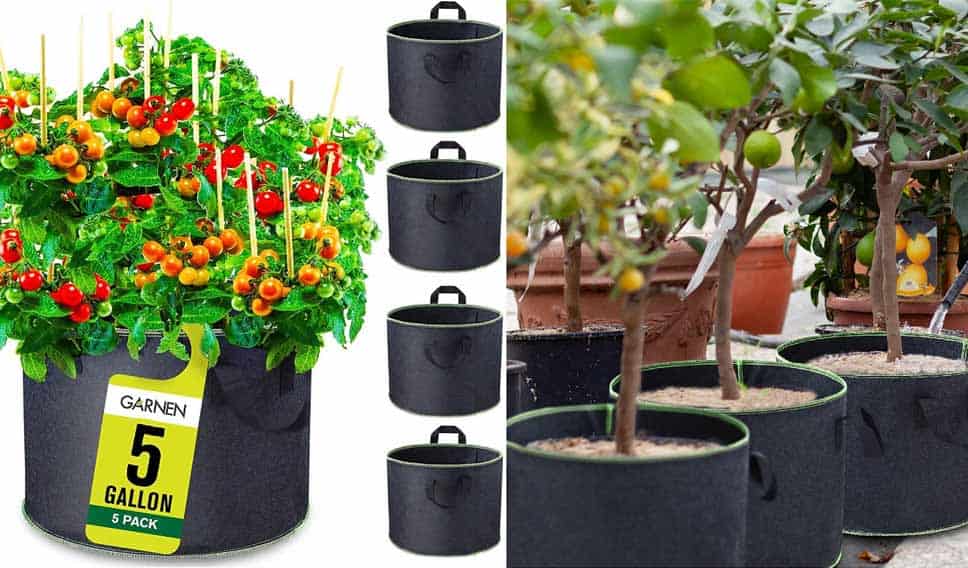
Click the image to buy on Amazon.
Choosing the proper vegetable containers is essential for their growth and health. When selecting containers, dimensions, and materials should be considered. Larger containers are preferable because they allow the roots to thrive and retain more moisture. As a general guideline, you should select containers with a depth of at least 12 inches.
Due to their aesthetic allure, terracotta and ceramic containers are popular materials for planters. However, these materials dry out more quickly than plastic or glazed containers. Consider using plastic containers that retain moisture for extended periods if you reside in a warm climate or have a hectic schedule.
Additionally, you must ensure that the bottoms of your containers have drainage openings to prevent soggy soil. If the selected container lacks drainage openings, they can be drilled yourself. You may improve drainage by placing gravel or stones at the container’s bottom.
Also Read: 12 Top Gardening Tools For Your Ease
Essential Tips for Successful Vegetable Container Gardening
To ensure the success of your vegetable container garden, you must bear in mind the following guidelines. Find a location that gets at least six hours of direct sunshine each day, and pick that one. Find a sunny place on your balcony or veranda to cultivate your vegetables.
Next, use a high-quality potting mix explicitly developed for container horticulture. Typical garden soil is frequently too dense and can result in poor drainage. Potting mixtures are lighter, well-draining, and nutrient-rich, so your plants can flourish.
Also essential for container cultivation is watering. Check the soil’s moisture content frequently and water when the upper inch feels dry. It is necessary to avoid overwatering, as this can cause root decay. A general rule of thumb is to water until water drains from the bottom of the container.
Another essential aspect of vegetable container cultivation is fertilization. Since the plants flourish in a confined location, you must provide them with nutrients. Use a balanced, slow-release fertilizer or organic compost to provide the necessary nutrients. Follow the manufacturer’s application rate and frequency recommendations.
Also Read: How to Grow Fruit Trees in Containers
Container Garden Ideas for Small Spaces
You can still create a stunning container garden even if you have limited space. There are numerous inventive ways to maximize space while reaping horticulture’s benefits.
i). Window Boxes
Window planters add a splash of color and some verdant foliage to your home. When purchasing window planters, numerous sizes are available for selection. They may also assist in maintaining your home at a more comfortable temperature throughout the hot summer months.
When looking for window boxes, you should get the appropriate size for your windows and have drainage holes built into them.
ii). Hanging Baskets
Baskets hung from the ceiling are suitable for areas limited in ground-level space and otherwise constrained. You can also utilize them to add height and interest to your landscape by using them in this way. When shopping for hanging baskets, it is essential to choose ones that have drainage holes and are of an appropriate size for the plants that you want to cultivate.
iii). Terracotta pots
Terracotta pots are a time-honored option for container gardening, and for good reason. They are permeable, contributing to the wet soil, which is a benefit. However, they may also get dry very rapidly. Therefore, it is essential to water them consistently.
iv). Plastic pots
Compared to terracotta pots, plastic pot prices are far more reasonable. They have a lower risk of shattering if they are dropped. However, they do not breathe as well as clay pots do. Thus, it is essential to ensure the soil is well-drained before planting anything in one of these containers.
v). Wooden barrels
Growing vegetables in wooden barrels offers a novel and visually appealing alternative to traditional methods. They also have a high wear and tear resistance and a long lifespan. On the other hand, it may be more challenging to locate them than it is to discover different kinds of containers.
vi). Combination planters
Combination planters are a terrific method to cultivate a variety of veggies in a short area since they combine many planters into one. They generally consist of several distinct compartments, each capable of being planted with a distinctive vegetable.
It does not matter what kind of container you choose, but you should always fill it with good quality potting soil explicitly formulated for growing veggies. It would help to regularly fertilize your plants to provide them with the necessary nutrients.
Even in the tightest of quarters, it is possible to cultivate an attractive and fruitful container garden with careful design and maintenance.
Also Read: Unique Gardening Tools That Will Up Your Gardening Game
Flower Pot Ideas for a Beautiful Container Garden
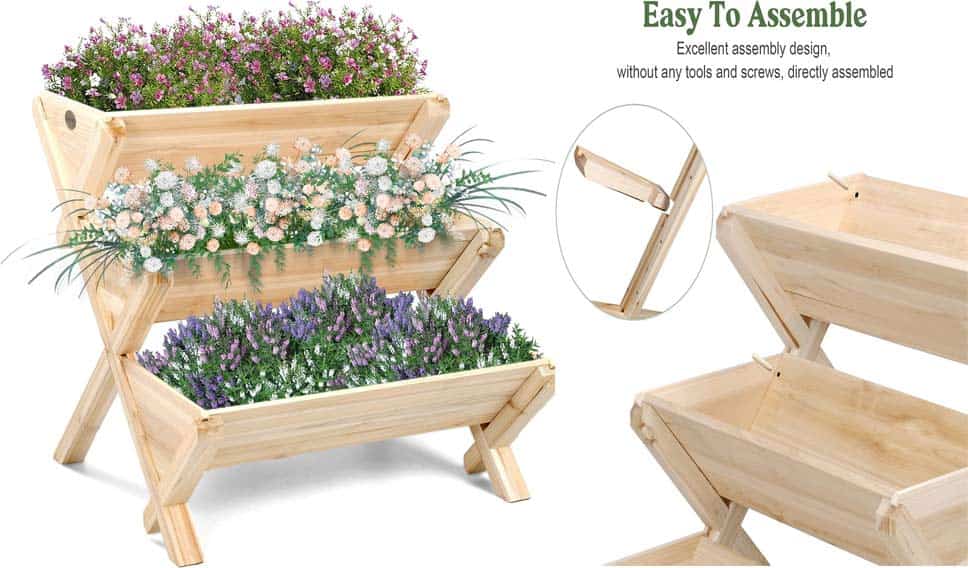
Click the image to buy on Amazon.
In addition to growing vegetables, container gardens offer limitless opportunities for producing and displaying beautiful flowers. Whether you favor vibrant blossoms or subtle arrangements, there are a variety of flower container designs to suit your preferences. Here are some concepts to spark your creativity:
1. Colorful Annuals: Plant an assortment of annual flowers in complementary hues to create a vibrant and eye-catching display. For a splash of color, consider using petunias, marigolds, and zinnias.
2. Thriller, Filler, Spiller: This popular planting technique involves selecting a tall, dramatic plant as the “thriller,” filling in the middle with medium-sized plants as the “filler,” and trailing plants as the “spiller.” This combination gives your container garden depth and visual appeal.
3. Monochromatic Elegance: Create a sophisticated appearance by selecting flowers from the same color family. White, ivory, and pale pink hues create an elegant and soothing display.
4. Succulent Delights: Not only are succulents fashionable, but they are also ideal for container horticulture. Their distinct forms and textures add visual interest and require little upkeep.
5. Fragrant Herbs: Combine aromatic herbs such as lavender, rosemary, and thyme in a container for a sensory delight. In addition to adding a pleasant fragrance to your garden, they can also be used in cooking.
Also Read: IoT In Agriculture Examples
Outdoor Planter Ideas for a Stunning Display
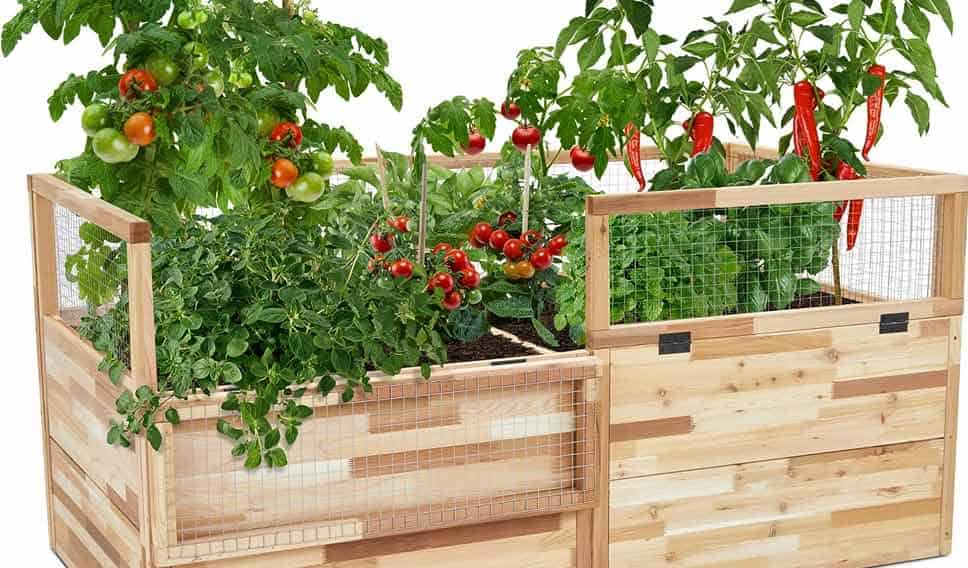
Click the image to buy on Amazon.
If you have outdoor space, such as a patio or terrace, you have more options for creating a beautiful container garden. Here are some planter suggestions for your outdoor living space:
1. Statement Planters: Choose enormous planters that are eye-catching and attention-grabbing to serve as the center of focus in your outdoor area. These can be large ceramic containers, wooden planters, repurposed barrels, or basins.
2. Vertical Gardens: Installing a vertical garden on a wall or fence is a great way to make the most of the area available for seeding. Numerous systems are available that permit the vertical cultivation of various plants.
3. Hanging Gardens: Hang containers or planters from pergolas, tree branches, or a robust hook on your patio to create hanging gardens. This lends a touch of whimsical charm to your outdoor space.
4. Edible Landscaping: Include edible plants in your outdoor planters for attractiveness and functionality. Consider sowing fruit trees in large containers or growing herbs in elevated receptacles.
5. Seasonal Displays: Alternate your outdoor planters with the seasons to maintain a fresh and inviting outdoor space. Plant spring bulbs for a colorful explosion, or transition to autumn flowers and ornamental grasses for a cozy autumn feel.
Also Read: How To Build A Small Greenhouse For Winter
Container Gardening for Beginners: Getting Started with Potted Plants
Getting started may seem daunting if you’re still familiar with container horticulture. Nonetheless, with a few easy steps, you’ll be well on your way to establishing a successful container garden. Here is a guide for beginners to help you get started:
1. Start with Easy-to-Grow Plants: Start with plants known to be resilient and forgiving, such as herbs or lettuce. These plants are typically more tolerant of novice gardening errors and will still provide a rewarding experience.
2. Choose the Right Containers: Select the Appropriate Containers. Select containers proportional to the size of the vegetation you wish to cultivate. Beginners should begin with larger containers to allow for root expansion.
3. Use High-Quality Potting Soil: Invest in potting soil formulated explicitly for container horticulture. This will provide your plants with the necessary nutrients and drainage.
4. Water Regularly: Container gardening necessitates more frequent irrigation than traditional gardening. Check the soil’s moisture content regularly and water when it becomes dried to the touch. Overwatering can result in root decay, so avoid doing so.
5. Provide Adequate Sunlight: Most vegetables and flowering plants require a minimum of six hours of daily direct sunlight. Position your containers in ample sunlight to promote healthy plant growth.
Also Read: Easiest Crops To Grow For Profit
Tips for Container Gardening to Maintain Healthy Plants
A few additional considerations are necessary to maintain thriving plants in your container garden:
1. Regularly Monitor Soil Moisture: Check the soil’s moisture levels daily, particularly during the summer. To prevent under- or overwatering, adjust your watering schedule accordingly.
2. Prune and Deadhead: It would help trim your plants regularly to eliminate sick or dead foliage and encourage new development. Eliminating spent blossoms, also known as deadheading, will promote continuous flowering.
3. Fertilize as Needed: Additional fertilization may be required depending on the type of vegetation you are cultivating. Utilize a balanced, slow-release fertilizer or organic compost based on the plant’s requirements.
4. Control Pests and Diseases: Keep an eye out for any disease or insect damage symptoms on your plants and immediately take any required preventive action. This may need the removal of sick leaves or organic pest control methods.
5. Rotate Your Plants: Rotate your plants annually between containers to prevent nutrient depletion and disease accumulation. This will aid in maintaining soil health and decrease the likelihood of plant-related issues.
Also Read: 26 Plants That Can Live In A Basement
Creative Plant Pot Ideas for a Unique Container Garden
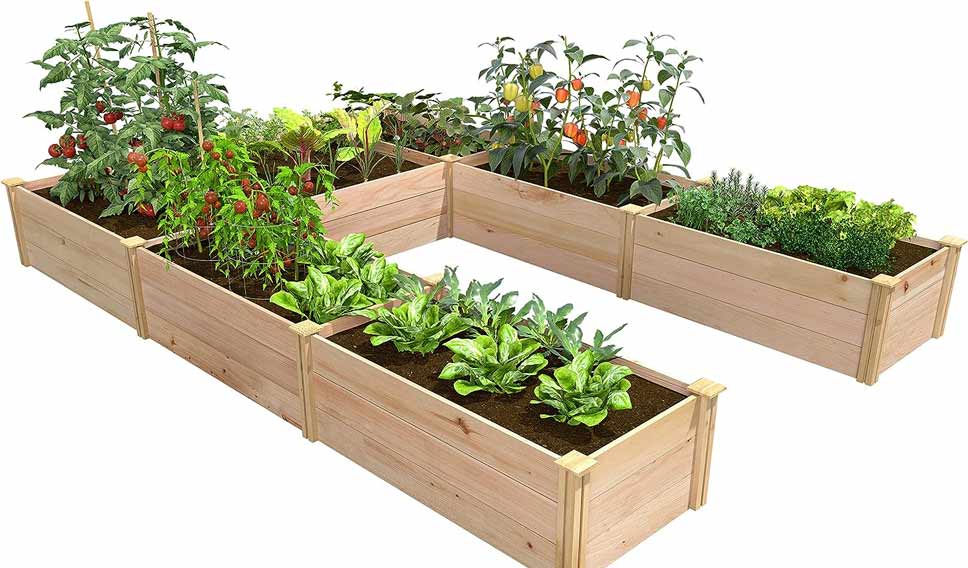
Click the image to buy on Amazon.
Consider integrating creative plant receptacle ideas to take your container garden to the next level. Here are a few creative ideas to inspire you:
1. Repurposed Containers: Utilise vintage teapots, containers, or even suitcases as receptacles. This adds a whimsical flourish and can be an excellent conversation starter.
2. Vertical Planters: Attach small containers to a vertical structure, such as a wooden pallet or trellis, to create a vegetative wall. Plant a selection of flowering plants and herbs to create a dazzling display.
3. Upcycled Materials: Give new life to obsolete items by converting them into receptacles. Use old tin cans, wooden containers, or even shattered terracotta planters to achieve a rustic and eco-friendly appearance.
4. Hanging Terrariums: Plant small succulents or air plants to create miniature ecosystems in glass terrariums. As an eye-catching focal point, they may either be suspended from the ceiling or set on a surface such as a countertop.
5. Living Wreaths: Plant small succulents or foliage in a circular frame to create a living wreath. Hang it on your front door or use it as the focal point of a striking and unique display.
Container Gardening Services and Resources for Beginners
If you are still trying to decide whether to establish your container garden, numerous services and resources are available to assist you. Multiple garden centers offer container gardening seminars and lectures where you can learn the fundamentals from seasoned gardeners. Additionally, many internet resources, blogs, and forums are dedicated to container gardening that guides those interested.
Consider contacting local gardening organizations or associations to interact with fellow gardeners who can provide advice and assistance. There may even be community gardens or communal horticultural spaces where you can collaborate with others and gain knowledge from their experiences.
Also Read: Cheap Vegetable Garden Ideas For You
Conclusion
For those lacking the space for a traditional garden, container gardening offers many opportunities. There is no limit to what you can do with a few containers and a bit of imagination, from cultivating your vegetables to creating beautiful flower arrangements. By following the advice and suggestions presented in this article, you will be well on your way to reaping the benefits of growing vegetables in containers and creating a gorgeous container garden. So, put on your gardening equipment and begin your container horticulture journey!
Recent Posts
Here is reply of high-demand removable wallpapers. The wallpaper industry has changed a lot in recent times, with the launch of removable wallpaper being seen as a blessing for homeowners, renters,...
Brown is an often neglected color when considering interior design but brown decor living room ideas could make your house feel warm, sophisticated, and timeless. More adaptable than any other...
